Q ACOUSTICS CONCEPT 50 Review: Curious Q
A floorstander different to most else, Q Acoustics Concept 50 gets Noel Keywood’s attention. Read our Q ACOUSTICS CONCEPT 50 Review.
I found many things curiously interesting about the Concept 50 floorstander from Q Acoustics, important things that distinguish it. But the company don’t mention them. Are they meant to be secret? Perhaps. I’ll get onto that later. Right now let me outline what this loudspeaker is all about.
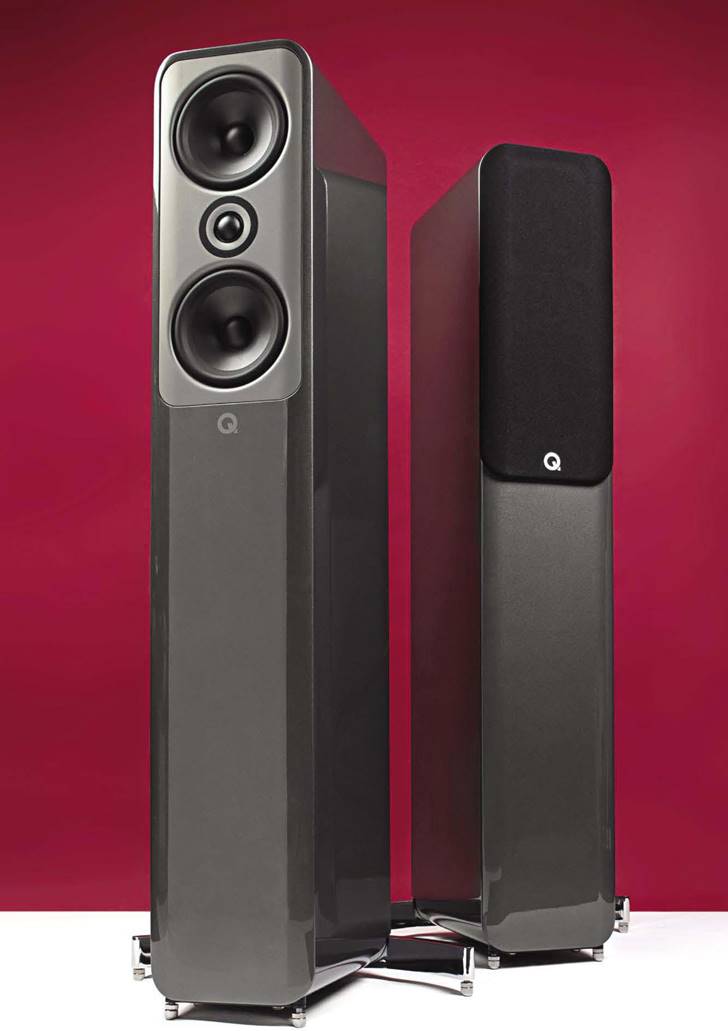
First major point is that like all Q Acoustics loudspeakers I’ve reviewed in the past the Concept 50 has been balanced by its designer to have an unusually mild sound. It’s still a technically accurate loudspeaker, but one quite different to most else – important to know in any showroom demo. That sets the stage for the rest of the review. This one is different.
Unpacking the Concept 50s revealed a well finished, deep gloss lacquered cabinet with smooth, lightly beveled edges. The dark Anthracite colour of our samples muted their visual presence, but it won’t clash with all around it. Q Acoustics call this ‘silver’; black and white are also available. A small grille is held on by magnets and beneath it lie two 125mm (5in) bass/midrange units above and below the 25mm (1in) fabric dome tweeter in what’s called D’Appolito configuration that gives consistent sound balance with height due to symmetric phase matching.
The drivers are custom designs, mounted on a sturdy 3mm aluminium plate to locate them firmly, the sealed-back tweeter isolated to lessen vibration into it. Q Acoustics make an issue of the effects of vibration – into the drivers, the crossover and cabinet walls. The crossover is isolated at the bottom of the cabinet to minimise this issue, and the Gelcore dual-layer cabinet walls are asymmetrically braced to lessen discrete panel resonances. Weighing 22.9kgs (50lbs) each of the cabinets are heavy and solid, but narrow at 418mm (16.5in) – we were nervous about leaving them standing without the stabilising outriggers supplied.With these and the adjustable hemispherical feet in place however, they sat firmly. A height of I metre (40.4in) is standard enough as is a depth of 319mm (12.6in).The rear carries unusually large bi-wire binding posts able to accept bare wires, spades or 4mm banana plugs. There’s also a large-ish port for which optional foam bungs are supplied to lessen bass if need be.
SOUND QUALITY
As I said at the start, this loudspeaker (measurement showed) wasn’t going to sound bright so I hooked it up to our PrimaLuna Evo300 Hybrid amplifier rather than the softer sounding Creek Voyage iA20. I did however use the Creek as a preamplifier so as to feed in hi-res Bluetooth (24bit) from an iPhone IIX Pro running an Onkyo HF player app, in addition to CD from an Oppo BDP-205D player connected digitally to the Creek, utilising that latter’s internal AKM DAC.
That the Concept 50 is “mild” as I said earlier is sonically its most obvious feature relative to all else. But that had peculiar impact. It threw emphasis back to the midrange that in itself seemed almost holographic, as well as deeply insightful in a gentle but revealing manner. After some time of relaxed / intrigued listening a voice in my head suddenly said “this is how it was in the past”. Not so much a move back to paper cones, woof and honk, but a deeply relaxing listen – in this case one with modern sophistication.This was their secret ingredient.
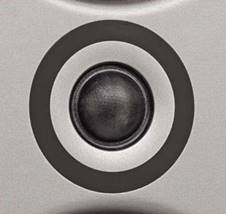
Between the bass/mid drivers sits a fabric dome tweeter in a shallow waveguide. This gives a smooth response from 2.2kHz up to 20kHz plus good integration for consistent sound around the room.
Easy to pick up and possibly complain about is lack of treble sparkle.The rich Bournville balance left that out, yet at the same time there was plenty of high-end oomph with tracks like Nils Lofgren’s Keith Don’t Go where extended harmonics gave the steel strings necessary bite, yet my attention was more focussed on his lightning finger work and vivid playing skills. I heard more of this performance than usual by being better engaged, rather than distracted by over-emphasised highs.
“the Concept 50s had old style weight and thunder, mixed in with great midband insight and lovely imaging”
There were other benefits. With oldies but baddies like The Eagles ‘Somebody’ the messy treble of this dynamically compressed CD track receded, leaving Glen Frey’s vocals and the swirling Hammond to step forward. Better, I found it easy to crank up volume and not be assaulted by screeching CD treble. Just like the old days – before CD!
In keeping with Q Acoustics attention to stability and lack of vibration, stereo imaging was superb in spite of highs being unobvious. And here I get to another peculiar property: where many loudspeakers give flattened perspectives, the Concept 50s came across as atmospherically deep in their sound stage – and this affected much. Johannette Zomer’s voice soared from a deep space, singing Handel’s Lascia chi’io Pianga, with a sense of dynamic push to her voice that made for dramatic listening to this lovely piece. Backing strings were rich and fruity, the harpsichord chimed away gently.
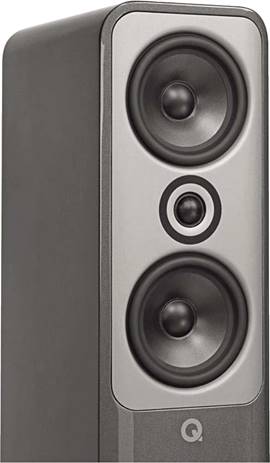
The popular D’Appolito configuration of drive units places a bass/mid unit above and below the tweeter, giving a consistent sound whether sitting down or standing up. Ear height is not an issue.
Switching back to conventional Rock and Fleetwood Mac’s Dreams (24/96) regained the power I recall of it, with none of the treble sharpness. Not just because Stevie Nicks vocals were embodied and punchy in the mix, but because Mick Fleetwood’s drums and cymbals were meatily powerful, as I wish-for with classic Rock. It always was that way, my memory tells me, but modern loudspeakers commonly lose the Zeitgeist. Let’s go back and have some fun, the Concept 50s said.
Bringing me to bass quality. As measurement showed, these ‘speakers have plenty of deep bass but it was nicely delivered rather than conspicuous, as with the Acoustic Energy AE320s or JBL HDI-3600s. I was wary about what appears to be a bass port peak in measurement of Frequency Response but this was balanced by lower forward output to give a subjectively even result in my 17ft long lounge with its 33Hz length resonance mode, meaning I heard low bass subsonics but was not shaken by them.The overall sonic flavour of these speakers however is one of weight and body, with solid, tuneful bass, in antithesis to the brighter, thinner delivery that is the current norm.
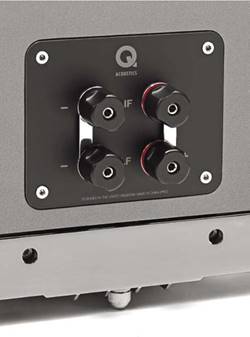
Sturdy bi-wire terminals sited low down at rear, fitted with links for conventional mono-wiring. The links must be removed for bi-wiring, where separate bass and treble cables are used.
As a quick aside on this topic, the Concept 50s are technically no less inaccurate than their rivals, even though they sound different. It’s just that ‘bright’ has become the norm – but that doesn’t mean it is right. The Concept 50s are just as right, even though conspicuously different. Quite a surprise to me, so a bigger one to others attuned to ‘bright’. Depends upon whether you like Cocoa or Lemon Juice before bedtime 🙂 What I would say is that the Concept 50s made listening easy and fun.They had old style weight and thunder, mixed in with great midband insight and lovely imaging.As the company claim there was no obvious colour in the usual sense of the word, but I suspect some of the depth perspective came from box echo. There was a sense of depth our Martin Logan electrostatic panels show is not there, suggesting the Concept 50s sex it up a bit, but hey-ho, that’s far better than shrieking! Think Rubens for the sonic picture
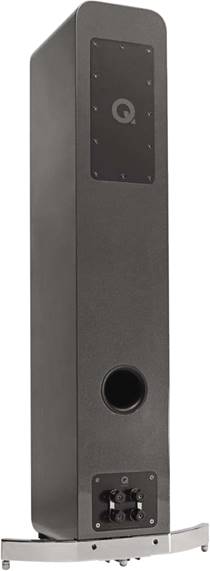
A sturdy rear outrigger stabilises the cabinet, helped by adjustable feet. The large reflex port damps both bass drivers that share a single chamber. Like most ports it is tuned to handle low bass frequencies.
MEASURED PERFORMANCE
Our third octave analysis of pink noise shows frequency response is smooth and even (a sign of low colouration from local resonances) but surprisingly output from the tweeter has been set lower than that of the bass/mid drivers, by up to -2dB. This was the best (flatest) result possible, with measuring microphone on-axis. Rarely are loudspeakers balanced like this: it will set the Concept 50 well apart subjectively, with an obviously mild sound against most else, since rivals have at least +3dB more treble by comparison – an easily audible difference obvious in a showroom comparison. The response was well maintained on the forward axis, laterally and vertically, by a well integrated D’Appolito arrangement.
The fabric dome tweeter’s output was smooth and peak free from crossover at (quoted) 2.1 kHz all the way up to 20kHz: it performs well and should give clean treble free from coarseness.
At low frequencies, broad output from the port (red trace) detracts from forward output in unusual fashion, suggesting the port is not in-phase with forward drivers as usual; there is phase error. Port output (red trace) was as high as shown when SPL matched in measurement, but this balances lower forward output. A peculiar situation but the net result is strong output down to a low 30Hz, so deep rumbling ‘subsonics’ will be reproduced.
With one nominal Watt of input (2.8V) the Concept 50s produced 88dB sound pressure level (SPL) which is loud. Amplifiers of 40W or more will suit for high volume in reasonably large rooms. Overall impedance measured with pink noise was 6 Ohms, right on the current norm. The impedance curve shows port resonance at 40Hz, correlating with the peak of port acoustic output (red trace).
Measurement shows the Concept 50 will have a mild tonal balance, due to low treble level. Smoothness of response points to low colouration and bass is well extended.

Company Info
Q Acoustics
+44 (0) 1279 501111
CONCLUSION
Quite different in their sound from all else, I thoroughly enjoyed Q Acoustics Concept 50 loudspeakers.They’re daringly different in having a big bodied, rich and smooth sound that allowed me to wind up volume and enjoy the music. I got to hear right into performance, rather than being assaulted by artificially emphasised ‘detail’ – meaning digital distortion. It was reminiscent of analogue from the past even when playing digital of today. A nice trick. Definitely an analogue sounding loudspeaker and one I would urge you to spend listening time with. I thought these loudspeakers were gorgeous – in sound and finish.
VERDICT
When you purchase through links on our site, I may earn an affiliate commission. Here’s how it works.
Q acoustics concept 50 speaker package 7:1 surround sound
Concept centre, concepts 40s front, concept 20s side and concept 2010i at the rear with a 2070i subwoofer, 7.1 surround sound ...






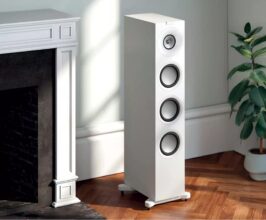
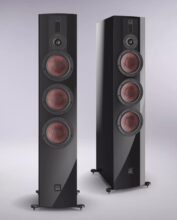
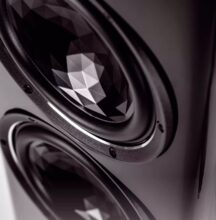
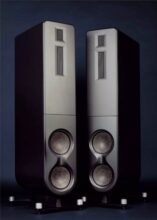
Very interesting review. I love the description of the sound being more cocoa than lemon juice before bedtime. It sounds like the kind of sound I might enjoy in all but the treble extension where I would definitely find them wanting. My Triangle Esprit Titus have the kind of sound you are describing with the added bonus of having treble detail which is not harsh or fatiguing but delicate and subtle.